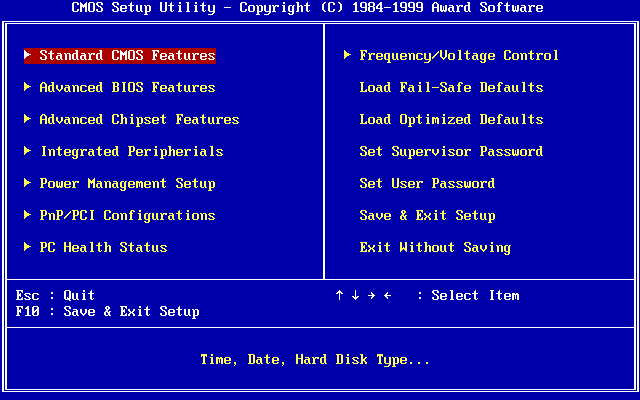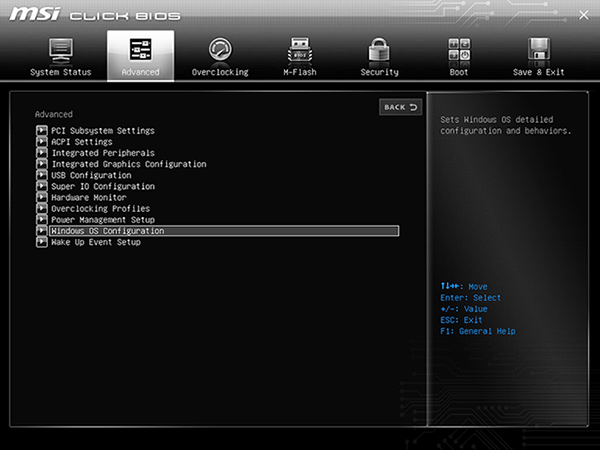What is UEFI
When we start the computer, from booting to entering the system, the computer will perform a series of preparation tests. This preparation for testing is completed by a quick boot configuration of a computer named UEFI. What is UEFI? Now we will take you into UEFI.
Introduction to UEFI
To understand UEFI in detail, you have to start with the BIOS. We all know that every ordinary computer will have a BIOS, which is used to load the computer's most basic program code, and is responsible for the tasks of initializing the hardware, testing hardware functions, and booting the operating system.

BIOS is the abbreviation of Basic Input Output System. It is a set of programs that are solidified on a ROM chip on the motherboard of the computer. It saves the most important basic input and output programs of the computer, self-checking programs after power-on, and system self-starting programs. It can read and write system settings from CMOS. specific information.
UEFI is the abbreviation of Unified Extensible Firmware Interface. It is a new industry standard that specifies a system interface in a pre-boot environment. UEFI is a concept opposite to BIOS. This interface is used for the operating system to automatically load from the pre-boot operating environment to an operating system, so as to achieve the purpose of simplifying the boot process and saving time.
The function and role of UEFI
It will be more helpful to understand the functions of UEFI if you understand the functions of BIOS first. BIOS has three main functions
1. Self-check and initialization program: including checking whether the computer hardware is good, initializing some external devices and booting Dos or other operating systems to read the boot record on the hard disk.
2. Program service processing: BIOS directly deals with the computer's I/O devices, sends commands through specific data ports, transmits or receives data from various external devices, and realizes the direct operation of software programs on the hardware.
3. Hardware interrupt handling: BIOS will tell the CPU the interrupt number of each hardware device when booting. When the user issues an instruction to use a certain device, the CPU will use the corresponding hardware to complete the work according to the interrupt number, and then jump back to the original according to the interrupt number work.
Like BIOS, UEFI is a "bridge" connecting software and hardware. It is the first program that runs when the computer is turned on. Its main function is to provide the computer with the lowest level and most direct hardware settings and control. According to Microsoft, UEFI mainly has the following functions:
1. Improve security by protecting the pre-boot or pre-boot process to resist Bootkit attacks.
2. Shorten the start-up time and the time to resume from hibernation.
3. Supports drives with a capacity of more than 2.2 TB.
4. Supports 64-bit modern firmware device drivers, which can be used to address more than 17.2 billion GB of memory during system startup.
5. UEFI hardware can be used in conjunction with BIOS.
Compare with BIOS, what are the advantages of UEFI
UEFI boot is a new motherboard boot item and is regarded as the successor to the BIOS which has a history of nearly 20 years. Compared with BIOS, the advantage of UEFI is that it “skips” the self-checking process at startup, which can increase the startup speed of entering the operating system after the computer is turned on. The traditional startup method is now called Legacy.
At present, the motherboard is mostly set to three boot modes, namely: Auto, UEFI, Legacy. When setting up the boot, the BIOS with UEFI also provides boot options for you to choose which way to boot. The meanings of the various modes are as follows:
Auto: Automatically start in the order in the boot device list, using UEFI mode first;
UEFI only: Only select devices with UEFI boot conditions to boot;
Legacy only: Only select devices with Legacy startup conditions to start.
In addition to convenient startup, UEFI also has the biggest visible feature that UEFI supports graphical operations.


You can see that the UEFI interface is more three-dimensional than the BIOS interface.
In addition, before starting the operating system under the BIOS, the system startup code contained in the master boot record must be read from the specified sector on the hard disk, and then the operating system must be booted from the active partition. Under UEFI, none of these are needed, the master boot record is no longer needed, and the active partition is no longer needed. These operations make startup easier.
Conclusion
UEFI has many functions that BIOS does not have, such as a graphical interface, high security, large capacity, and so on. These features make UEFI easier to use, more versatile, and more convenient than traditional BIOS.
UEFI eliminates the long-term self-checking problem of traditional BIOS, making hardware initialization and booting the system simple and fast. Put another way, UEFI has changed the computer’s BIOS not like BIOS, but a small operating system solidified on the motherboard. In addition, the development language of UEFI itself has changed from assembly language to C language, a high-level language. Joining makes it possible for manufacturers to develop UEFI in depth.
Traditional BIOS technology is gradually being replaced by UEFI. In recent new computers, many computers have already used UEFI, and it is a trend to use UEFI mode to install the operating system.


Comments
Post a Comment